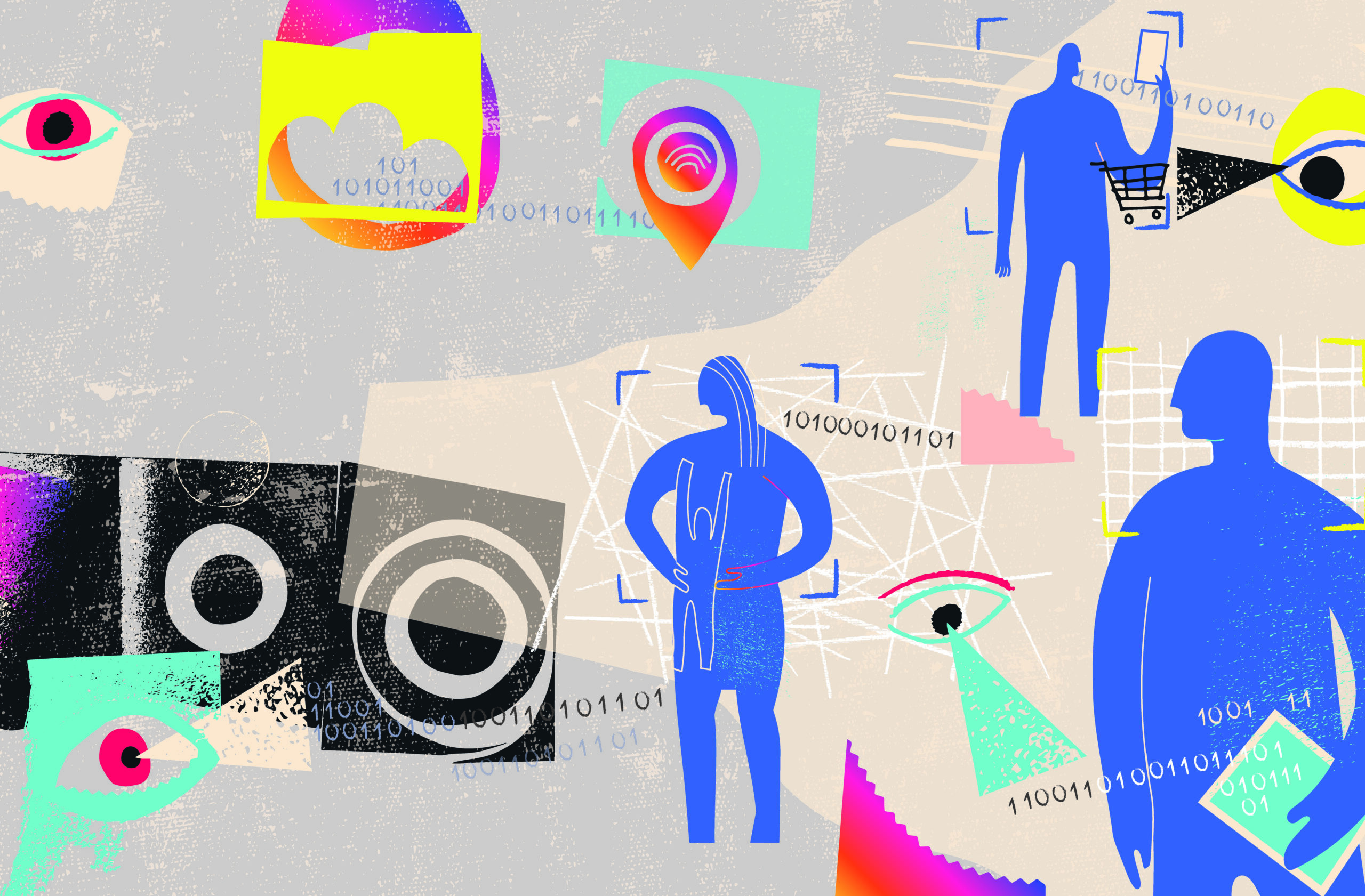by Ryan Raplee
Social media has become a part of daily life. We use these platforms to post baby pictures, reconnect with old classmates, follow breaking news and keep up with trends.
While these platforms have become popular digital gathering spaces, concerns remain about their impact on mental health, privacy protection and the spread of misinformation.
Behind the friendly interfaces and community hashtags, these platforms exist to capture attention and drive advertising revenue.
And now, the consequences are catching up with the companies behind the screens. Social media giants across the United States are facing a wave of lawsuits and government scrutiny. These legal challenges ask whether Big Tech should finally be held accountable for the impact of its platforms.
Here is a closer look at how that accountability is taking shape and what that means for the future of digital safety.
The Mental Health Fallout
If you are raising a teenager, you may have seen how these platforms can affect their behavior. They might check their phones immediately when they wake up or scroll videos late into the night.
Initially, Facebook, Instagram and TikTok were ways to stay connected, but a dark cloud now hangs over many homes. Social media usage has evolved into something harder to manage.
Mental health experts have warned that extended social media use, especially in children, can be harmful. Parents, educators and lawmakers are taking those concerns a step further. They are turning to the courts to argue that this is a public health crisis. And it is one created by social media companies that put profits over people.
The Mounting Medical Evidence
In 2021, the legal movement against these tech giants gained momentum following a significant revelation. A former Facebook employee turned whistleblower released internal research that showed the company knew Instagram was negatively affecting teen mental health.
According to that research, one in three teenage girls said Instagram made them feel worse about their bodies. Despite these findings, Meta did not make any changes to their platform.
With that evidence in hand, parents, advocacy groups and school leaders began to argue that these companies were not just platforms but active participants in creating harm. As a result, they should be held accountable like any other business selling a dangerous product.
Schools Take Action
In early 2023, Seattle Public Schools filed a groundbreaking lawsuit against several of the biggest names in social media: Meta, TikTok, YouTube and Snapchat. The suit alleged that these platforms had played a direct role in the youth mental health crisis. The school district declared its actions a “public nuisance.” According to the district, these platforms interfered with students’ ability to learn. They also disrupted classroom environments and forced schools to use more resources for mental health services. Since then, school districts in other states, including New Jersey, Oregon and California, have also filed lawsuits.
Addictive by Design?
Research and testimony suggest that social media platforms are not just engaging but have been designed to be intentionally addictive.
Infinite scroll, push notifications and algorithm-driven content streams keep users engaged for as long as possible. This can lead to trouble for young people with developing brains and limited impulse control. In turn, that can result in anxiety, self-image issues and compulsive use.
According to the plaintiffs, they argue that this is a conscious choice of product design. Like a defective product that results in physical harm, these platforms can cause psychological harm by design. Manufacturers are legally obligated to warn and protect when a product poses foreseeable risks, especially to vulnerable users like minors.
Tech companies are pushing back. Meta and others have invoked Section 230 of the Communications Decency Act. This protects internet platforms from liability for content created by users. However, many of these lawsuits center around the structure of the platforms, not the content that users post.
That distinction could be a game-changer. If courts agree that features like recommendation algorithms are part of the product, that could fall outside any Section 230 protections.
States Enter the Fight
In October 2023, more than 40 state attorneys general filed a lawsuit against Meta. They stated that the company knowingly designed features promoting compulsive use in young people and misled the public about the risks. The suit accuses Meta of violating state consumer protection laws and failing to enforce minors’ protections.
Unlike individual lawsuits, attorneys general can subpoena internal documents, demand structural changes and push for large-scale reforms.
Families and Communities React
Around the country, parents are joining lawsuits. They allege that their children suffered emotional harm, lost educational opportunities or even experienced suicidal thoughts as a result of social media use. In some tragic cases, wrongful death lawsuits have been filed when a child’s suicide followed patterns of online bullying or compulsive app use.
The Privacy Crisis
Have you ever clicked “Accept All” without reading the fine print? Many of us do. Most people do not expect a social media post to come with a cost to their privacy. But that is what’s happening.
Every scroll, like and comment leaves a data trail. Social media companies have quietly turned that data into a business empire for years. Now, the tide is turning.
At the center of a growing legal storm is the question: What did users agree to, and did they ever consent to how their information was used?
Social media platforms have become some of the biggest data-harvesting machines in history. They collect tons of information, from personal interests and political views to facial recognition and GPS locations.
Many times, this is from users who are unaware of the depth or sensitivity of what is being captured. However, there is a backlash, especially regarding how that data is handled for children and teens.
A History of Overreach
To date, one of the most infamous privacy cases involved Facebook’s relationship with the political consultancy Cambridge Analytica. The scandal revealed that the company had gained unauthorized access to tens of millions of user profiles.
All this was without the knowledge or consent of the individuals involved. In response, Meta eventually agreed to a $725 million settlement, which was the largest in U.S. data privacy class action history.
But that was only the beginning.
Since then, a troubling pattern has emerged. These platforms have been quietly collecting data, partnering with third-party advertisers or developers, and failing to implement user protections. This has led to class action lawsuits and government investigations.
As more internal documents and whistleblower reports surface, it’s clear that these companies prioritized growth and engagement over privacy and safety.
Children’s Privacy in the Crosshairs
Unfortunately, many of these instances involve minors. Under the Children’s Online Privacy Protection Act (COPPA), companies must get parental consent before collecting data from children under 13. This has led to multiple lawsuits against these social media giants.
Many allegations cite that they ignored these regulations or designed systems that allowed kids to bypass them. Some claims describe how platforms like Instagram and Snapchat failed to verify users’ ages, even when behavior suggested they were minors.
There are also allegations that the companies deliberately created user experiences that encouraged prolonged engagement. As this happened, the platforms collected detailed behavioral and biometric data in the background.
In October 2023, 33 states sued Meta. Once again, the issue centered around children’s data and features that could exploit them. This complaint claims the company’s actions violated consumer protection laws and state-level privacy statutes
Business of Behavioral Surveillance
What data is being collected? It comes down to more than usernames and email addresses. Some social media companies have implemented technology that tracks eye movements, analyzes facial features and measures time spent on posts.
In the industry, this is known as behavioral surveillance. That information powers the algorithms designed to keep users scrolling.
That has created a few legal issues. There are challenges in determining whether users, especially children and teens, had the opportunity to give informed consent to this type of monitoring. Many might not have fully understood what they agreed to or how their data might be used.
Some states are moving forward with privacy legislation. For example, California’s Age-Appropriate Design Code Act requires companies to minimize data collection for minors. Connecticut and Utah have also passed privacy laws. These states have enacted provisions targeting children’s data practices.
If these efforts gain traction across the country, it could force social media companies to overhaul their entire approach to product design.
A Turning Point in Consent
Precedents are still evolving in these situations, but there is a belief that the old “notice and consent” model is no longer enough. When it comes to minors, lawmakers and litigators have questions about whether companies should be responsible for the privacy harms that result from their designs.
This is changing how we think about accountability in the digital space. It is not about what companies say they do with data but what they actually do.
As public pressure grows, so does the push to align tech companies with the same standards that govern every other industry. These standards must focus on transparency, accountability and, above all, safety.
The Misinformation Machine
For many people, social media has replaced the morning newspaper, the nightly news and, in some cases, conversations with friends and family. Facebook, X (formerly Twitter), TikTok, Instagram and YouTube have become tools for staying informed. But when misinformation spreads faster than facts, the consequences can be serious.
Courts, regulators and advocacy groups are investigating how these platforms amplify false and harmful content. When does a platform become responsible for the damage caused by the misinformation it promotes?
Profits Over Accuracy
Unlike traditional publishers, social media companies do not create most content on their platforms. Instead, they decide how it is delivered to users. Algorithms determine what appears in users’ feeds based on engagement metrics, such as likes, shares, comments and viewing time. Unfortunately, false and inflammatory information is very engaging.
This creates a dangerous circle: the more shocking or polarizing the content, the more it is promoted. And the more a piece of misinformation circulates, the more likely it is to be accepted as fact.
Social media companies have known this for years. Internal documents released by whistleblowers showed that company leadership repeatedly declined to change algorithmic recommendations, even when their own data revealed that they were fueling extremism, misinformation and social division.
From Health Crises to Political Violence
The real-world consequences of misinformation have played out on a global stage. During the COVID-19 pandemic, conspiracy theories and false medical claims spread across social media platforms. Despite public assurances about a commitment to “combat misinformation,” internal audits revealed that platforms failed to take timely action to stem the tide of dangerous content.
The problem also caused issues in the 2020 U.S. presidential election. During this time, false claims of voter fraud circulated widely online. Some research showed that social media directly spread narratives that fueled the January 6th Capitol incident. Due to this, lawsuits were filed against tech companies.
Some of them argue that these platforms failed to moderate content. As a result, the companies created conditions that allowed misinformation to spread.
In one high-profile defamation suit, Dominion Voting Systems sued Fox News over false election claims. While not a social media platform, the case showed that companies can face legal consequences when they amplify falsehoods. That precedent is now being tested in cases involving social media platforms.
Section 230 Under Fire
Once again, the debate centers around Section 230 of the Communications Decency Act. As previously mentioned, this once-obscure piece of legislation was created to protect online platforms from liability for content posted by users. This is why Facebook is not sued for every defamatory post, and YouTube is not held accountable for every harmful video.
However, plaintiffs and lawmakers argue that the law was never meant to protect algorithmic amplification. With that, it is one thing to host a piece of content, but another to use search engines and algorithms to make sure that content reaches millions.
Several lawsuits are currently pending in federal courts. The core issue is whether these algorithms should be treated as a form of editorial conduct or product design.
If the courts agree with the latter, these companies may no longer be able to rely on Section 230 to protect them from design flaw claims that promote harmful misinformation.
Harm to Vulnerable Communities
The impact of misinformation is not distributed evenly. For example, public health misinformation has disproportionately harmed communities of color and low-income populations.
Along with that, misinformation related to immigration, crime and civil unrest has led to spikes in hate crimes and discriminatory policies. Plaintiffs in several lawsuits argue that the platforms had the data, resources and capacity to intervene. But they chose to do nothing. In turn, they prioritized engagement over ethical responsibility.
Some advocacy groups and state attorneys are exploring civil claims under consumer protection statutes. When companies make public statements about safety and trust but privately allow harmful misinformation to spread unchecked, that may amount to deceptive business practices.
If the courts accept the argument that algorithmic amplification is a form of design, not just content distribution, the implications for social media companies are staggering.
Lawmakers on both sides are also pushing for Section 230 reform. Proposals exist to carve out exceptions for algorithm-driven misinformation, especially in cases involving children, election integrity or public health.
A Culture of Disinformation
Social media companies have insisted that they are neutral platforms, not publishers. However, these cases argue that neutrality ends where design choices begin. By curating what users see, these platforms have played a role in shaping public perception. And that is often done at the expense of truth.
What Could Actually Change?
If we want safer digital spaces for our kids, more control over our personal data and a healthier relationship with technology, we need to look at the big picture. That means rethinking the rules of the digital world from the ground up.
Here is what advocates, parents, educators and lawmakers are pushing for:
Stronger Federal Privacy Laws
Right now, the United States does not have a single nationwide law that protects your personal data. Instead, we have a patchwork of state laws and plenty of loopholes. The result? Most people do not realize how much of their personal life is being tracked, packaged and sold behind the scenes.
Advocates are calling for a federal privacy law that would finally set a national standard. The goal is not to throw more legal jargon at users but to give people meaningful control over their own information. That means:
- Limiting how much data companies can collect in the first place
- Banning surveillance-based advertising for children and teens
- Enforcing real consequences when companies break the rules
Algorithmic Transparency
Ever wonder why your feed looks the way it does or why certain videos, ads or headlines keep showing up over and over again? The answer is buried deep inside the platforms’ algorithms. These systems predict and shape what we see based on what grabs our attention.
Unfortunately, no one outside these companies knows how those algorithms work. For that reason, many experts are calling for transparency.
That doesn’t mean companies cannot innovate, but independent researchers, regulators and watchdogs need to understand how content is ranked, recommended and amplified. When harmful patterns emerge, like the spread of misinformation or the overexposure of young users to harmful content, there needs to be a way to see and stop it.
Age-Appropriate Design
If you have ever wrestled a tablet away from a child after three hours of YouTube or watched a teen spiral after a flood of negative comments, you already know these platforms were not built with the best interests of kids at heart.
With that in mind, there is growing support for mandatory age-appropriate design standards. There should be rules in place that require platforms to build features that prioritize children’s health and well-being instead of engagement metrics. Some suggestions include:
- Disabling auto-play by default on kids’ accounts
- Replacing infinite scroll with built-in stopping points
- Prompting users to take breaks after extended screen time
This is not about being anti-tech. It is about designing with empathy. After all, we hold toy manufacturers and car seat makers to high safety standards; why not digital products that children interact with every day?
Creating a Digital Regulator
Right now, there is no single agency responsible for overseeing how digital platforms operate. This would be similar to allowing airlines to run without an FAA or food companies to operate without the FDA. It simply doesn’t make sense.
Many experts believe the solution is a new federal watchdog. This would be a dedicated agency with the power, expertise and independence to keep Big Tech in check.
Once again, this wouldn’t replace innovation. It would help ensure that technology does not come at the cost of mental health, personal privacy or political stability.
Are Tech Giants Truly Being Held Accountable?
The surge in lawsuits marks a shift in how society confronts the unchecked power of social media companies. While courts have yet to consistently rule against tech giants, the growing volume of litigation signals a demand for accountability.
These legal efforts are testing the boundaries of long-standing protections like Section 230. Along with that, they are challenging platforms to rethink algorithms, transparency and user safety. Whether these lawsuits result in meaningful change remains to be seen, but they have undeniably sparked a new era of scrutiny and resistance.
For the first time, Big Tech is being forced to answer not just to shareholders but also to the very users and communities it has long influenced without consequences.








Leave A Comment